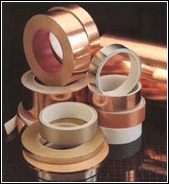Analyze the phenomenon and principle of LED being broken down by static electricity
The PN junction inside the LED is applied to the manufacturing, assembly screening, testing, packaging, storage and transportation of the electronic product, and installation and use. It is inevitable that the induced charge will not be affected by the electrostatic induction.
If the charge is not released in time, a higher potential difference will be formed on the two electrodes. When the charge energy reaches the LED's tolerance limit (this is the LED antistatic index value), the charge will be released instantaneously.
Discharges between the two electrodes of the LED chip in a very short time (nanosecond level), and instantaneously will be between the two electrodes (where the resistance is the smallest, often around the electrode), the conductive layer, the luminescent layer, etc. The internal material produces a local high temperature, and the temperature is as high as 1400 ° C. At this extreme high temperature, the material layer between the two electrodes is melted and melted into a small hole, thereby causing various abnormalities such as leakage, dead light and darkening.
The anti-static of LED chips of different enterprises, different processes, different substrate materials and different designs is also very different. The current anti-static height of the market is very different and the fish are mixed.
The antistatic level of the LED is independent of the package of the LED, depending on the chip itself. Some companies have adopted Zener diodes to protect them. This is a remedy adopted in the early days. Now, LED chip technology continues to advance, and this method is gradually becoming costly and operability is weak.
Once the enterprise encounters an LED LED light leakage and other accidents, the idea is often to strengthen the static management of its production workshop, such as grounding, laying static table mats, ion fans, etc., but this is not a cure, static is nowhere No, it can be said that 'hidden the first day can not hide fifteen'. Because the LED antistatic index used is low, it is difficult to cure a newborn with a health defect.
The company chooses LEDs (chips) with high anti-static index, which will completely solve the leakage accidents such as leakage and dead lights of LED caused by static electricity. Because of the high anti-static LED, it can adapt to various environments, such as LED anti-static. Above 2000V, it can generally withstand the static electricity in our normal environment. LEDs above 3000V can shine in the environment without deliberately strengthening the static control.
Copper foil adhesive tape applications:
· Electrical connection between surfaces (sheets / foils)
· Mounting transparent foils, windows for EMI/RFI shielding
· Shielding in housings and Faraday cages
· Cable shielding (Wrap arround the cable)
· Temporary shielding during emission and immunity tests
· Antistatic floor (ESD floor)
· EMI/RFI shielding (EMI/RFI shielding tape/gasket)
Maxi Width:990mm Maxi Length:100Metre
Adhesive thickness:0.05mm Liner
thickness:0.015mm
Copper thickness:0.035mm to 0.1mm
Resistivity:Less 0.05ohm/sq
Peel strength :1.6kg/25mm
1.Backing non-conductive adhesive
2.Backing nickle conductive
adheisve(<0.03ohm/sq)
Standard length is 25meter or 50meter
We could cut any width as customer request.

Copper Foil Adhesive Tape
Copper Foil Adhesive Tape,Copper Foil Conductive Tape,High Temperature Adhesive Tape,Thermal Resistance Polyimide Tape
JINAN EMI SHIELDING TECHNOLOGY CO., LTD. , http://www.emirfi.com